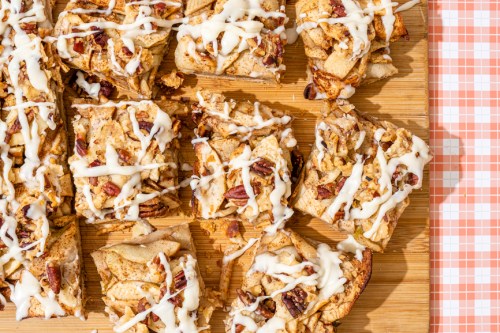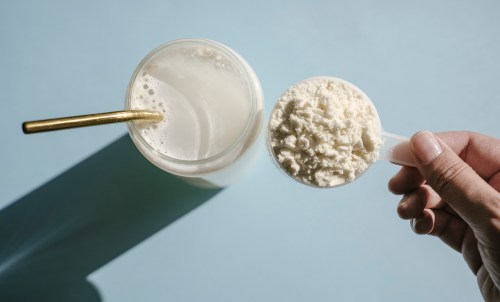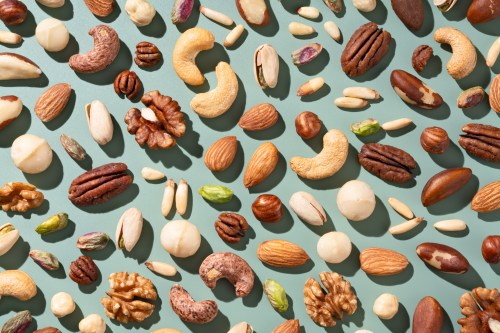Who wants to play a game of kiss, marry, kill? Fall edition. The options are: apple butter, apple pie, and apple fritters. If this decision feels nearly impossible to make, we’re right there with you. As the air gets cooler, the leaves begin to crunch under your feet, and cinnamon-scented candles are burning in every room of the house, it can only mean one thing: Fall is officially here, which means having a daily apple-stuffed baked good is a must. (What was that thing they said about keeping the doctor away?)
Experts in This Article
While apples might be found at the grocery store year-round, there’s undeniably something magical about the flavor of freshly-picked varieties. They’re crispier, fresher, and certainly more juicy than the waxy ones you’ll find at the airport come April. With apple season—which runs between late July and early November—in full swing, it’s officially time to visit the local orchard and bring home a heavy haul for all those fall baked goods to come.
Speaking of timeliness, ever been unsure which of your many freshly-harvested apple options (McIntosh! Fuji! Gala! Granny Smith!) to bake with when you were already pans-deep in oats, brown sugar, and baking soda? You’re not alone: Some farmers actually grow more than 50 different varieties at a time. To better understand which apple varieties are best served raw and which will make the most prize-worthy pie, crumble, muffins, butter, and even applesauce before you bake, we spoke to two apple experts and farm owners to learn more. Spoiler: Not all apples were meant to be cooked.
The best apples for baking, according to apple farmers
According to Al Rose, a fourth-generation farmer and owner of Red Apple Farm in Phillipston, Massachusetts (where he grows over 50 varieties of apples), picking the perfect apple for baking is deeply personal. However, there are a few key aspects he’ll keep in mind when picking apples to cook with. “Traditionally, if you want a really good baking apple, you’re looking for an apple with characteristics that would hold up when baking—so varieties with a firmer texture, like Granny Smith or Fuji. Also, you’ll want to use a type of apple that’s bigger, because they’re easier to peel,” he says.
As for Miranda Russell, who owns and operates Russell Orchards in Ipswich, Massachusetts with her husband, the type of apple considered best for baking is largely dependent on the time of year. “We grow lots of different types of apples. And what we use for our baked goods at home—and what I would recommend to others for baking—really does vary throughout the season,” Russell says. In other words, as the fall progresses, so do Russell’s baked good recipes; she changes what type of apple she incorporates (as well as what baked goods are on the menu) based on what’s available at the farm.
Ready to get into the more nitty-gritty selects from both Rose and Russell? Read on.
1. The best apples for baking early in the season: Gravenstein
One of Russell’s favorite apples at the start of the season are Gravenstein apples. “The best early season baking apples—and a great all-purpose apple option—is an heirloom variety called a Gravenstein. These ripen in mid- to late August, so they’re the first apple variety that we use in our bakery each fall. We bake them into make our first-of-the-season apple pies and other apple treats,” she adds.
According to Russell, Gravenstein apples are mostly green with slight hints of red and pack a tart flavor and crispy and crunchy texture. “But they don’t last very long, so once the Gravensteins are done, they’re not going to be ones that you pull out of cold storage the following May or June. They’re really meant to be used, consumed, and eaten early on,” she says.
Like Russell, the Rose family also loves Gravenstein, especially red Gravenstein. “These have always been my grandmother’s favorite for baking,” Rose says. The red skin helps impart a beautiful hue to dishes like applesauce or pies, he adds.
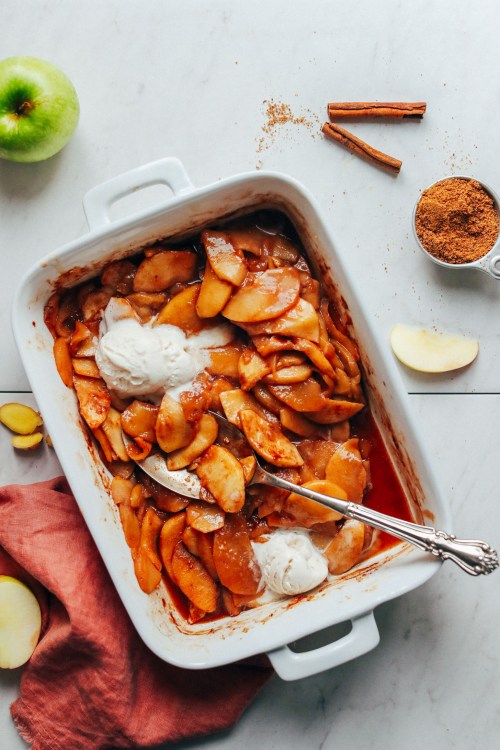
A delicious way to use Gravenstein apples: Easy Cinnamon Baked Apples
Minimalist Baker has done it again with this simple nine-ingredient easy cinnamon baked apple recipe that’s easy to make and loaded with fall-loving flavor.
Get the recipe: Easy Cinnamon Baked Apples
2. The best for apples for serving raw or making apple crisp: Cortland
Once Gravensteins have run their course, Russell shifts to using another of her favorite apples, the Cortland. “A Cortland is kind of like a quintessential baking apple in New England. It looks like a macintosh, but it’s bigger, plumper, and mostly red with some green coloration,” she says. But why is this one of her favorites for baking (and serving raw)? Well, it has to do with what’s on the inside.
“A hallmark of a Cortland apple is that, when sliced, its inside flesh is very bright white—and it stays whiter longer once it’s been cut into. This makes it a great choice if you’re putting it into a salad or something where you’re serving fresh apples,” Russell says. She also says that Cortland apples are great for making apple crisp because they’re a little bit softer and cook down well.
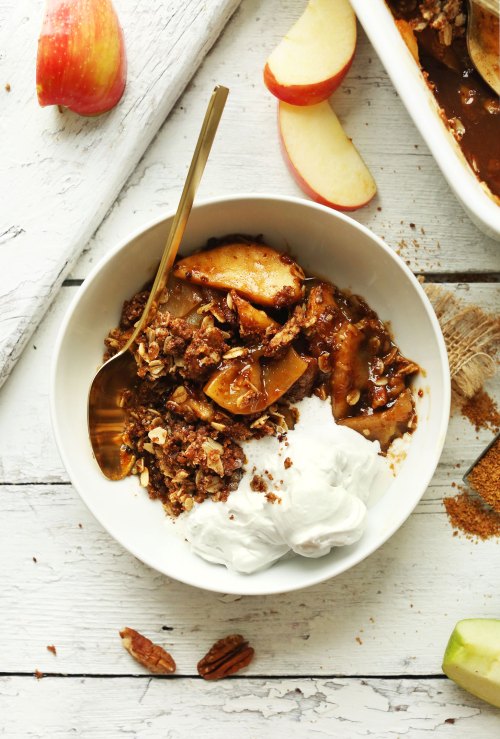
A delicious way to use cortland apples: Vegan Apple Crisp
Craving something sweet, crunchy, and very apple-forward? Here’s a delicious fall-time vegan apple crisp recipe.
Get the recipe: Best Vegan Apple Crisp
3. The best apples for baking late in the season and making pie: Baldwin
At the tail end of the apple season, after Gravensteins and Cortlands have run their course, the Russells opt for another prime baking apple called a Baldwin, which is very popular in New England. “There are several towns in Massachusetts that fight over the distinction of who created or discovered the Baldwin apple,” Russell says.
Rose adds that Baldwins are considered an “old-timers” apple, because they’ve been around since the late 1800s and have been a top commercial variety in New England for ages due to their sturdy and weather-resilient composition. “That’s an apple that lasts months and only gets better with time,” he says.
Aside from being a local treasure, Baldwins are a great all-purpose apple, especially for cooking. “The Baldwin is an apple that we use from the mid- to late fall exclusively for all our baking needs. And we actually use that apple for a lot of our hard cider and apple wines, too, because they’re tart and just a very good all-purpose apple overall. Baldwins are as hard as a bowling ball, and when you slice one open, they have a subtle yellow complexion,” Russell shares. Want a sweet dessert with a little bit of firmness from the apple? Baldwin is the way to go.
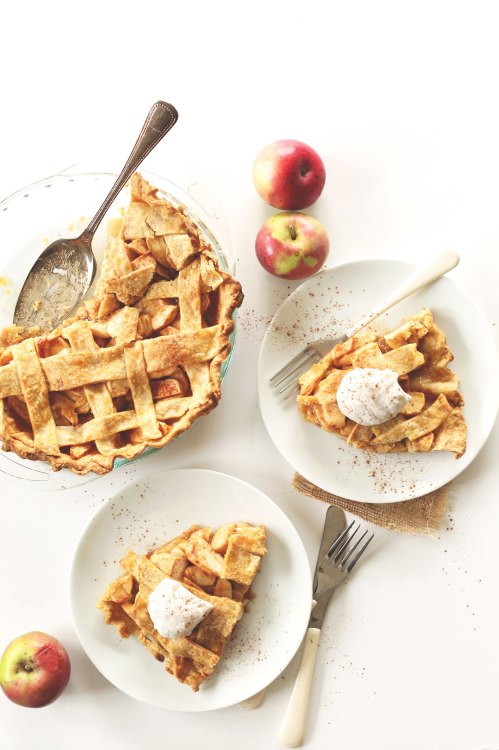
A delicious way to use baldwin apples: Pumpkin-Spiced Apple Pie
Turn on Hocus Pocus, carve some jack-o’-lanterns, and make this pumpkin-spiced apple pie recipe for all the fall-time vibes you could ever wish for.
Get the recipe: Pumpkin-Spiced Apple Pie
4. The best apples for making applesauce (or apple butter): Macoun
When it comes to making applesauce (or simply eating it on its own), Russell loves the Macoun variety, which she says have a beautiful dark red complexion that looks like a starry night sky and pack tons of sweet, spicy flavor. “If you’re making applesauce, for example, you don’t even need to add any other flavorings; you don’t have to add cinnamon, nutmeg, sugar, or anything. This is because the Macoun is just naturally very spicy and flavorful on its own,” she says.
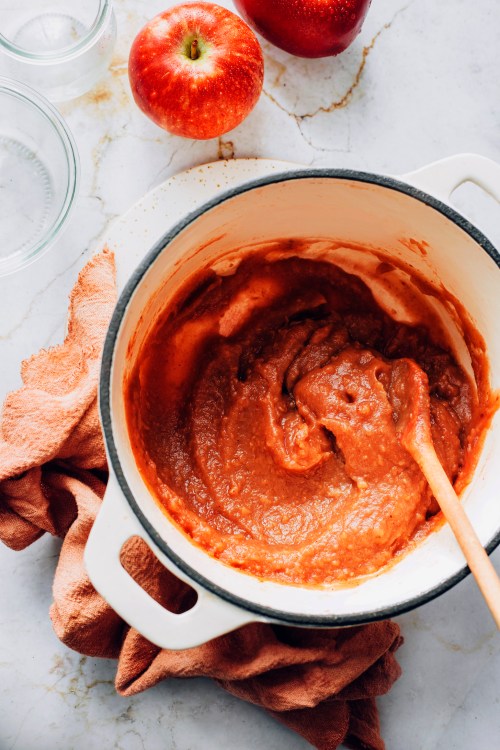
A delicious way to use macoun apples: Apple Butter
Want your whole house to smell like a fall-scented candle? Look no further. This one-pot apple butter recipe is all you need.
Get the recipe: 1-Pot Apple Butter
At the end of the day, apple farmers agree that it’s never a one-size-fits-all
An important thing to remember about baking with apples is that they’re all slightly different and thus will also yield different results. As a rule of thumb, Russell recommends doing a little bit of trial and error to determine the perfect sweet spot (regarding temperature, time, and cooking method) when it comes to baking apples. She also shares a brilliant tip for baking pies using different types of apples.
“When we go to bake our pies, we put little slits in it with the knife just to let the steam escape as they’re baking. So when you go to pull the pie out of the oven, you can take a knife and just poke it right through the slit that already exists in the top crust, so you’re not creating any kind of blemish on the top of the pie,” which is a perfect way to test the firmness and determine if the apples are cooked to your liking,” Russell shares.
As for Rose, he says that using a mix of different apples will yield the best results and has been an open secret among pie contest winners. “At the end of the day, it’s not just one apple that will make the winning pie—it’s a combination. You’re picking up on the characteristics of different apples to make something even better. It’s like a recipe, putting different components together to accentuate and support each other on the flavor side,” he says.
The best way to store apples
If there’s one thing apple farmers want you to remember is that apples should *always* be stored in the refrigerator. “I can’t stress that enough… put them in the refrigerator, and they’ll be good for probably months if they’re in the crisper drawer of the fridge,” Russell says. She notes that although you may be tempted to leave them out on a bowl on the counter because they’re beautiful (duh!), that can quickly lead to their mushy, mealy demise in just a few days. “We store our apples at 34°F,” she says. But, if you don’t have sufficient room in your refrigerator, a cold basement, garage, or cooler will do the trick.
Rest assured, no apples will go to waste around here:
Sign Up for Our Daily Newsletter
Get all the latest in wellness, trends, food, fitness, beauty, and more delivered right to your inbox.
Got it, you've been added to our email list.
